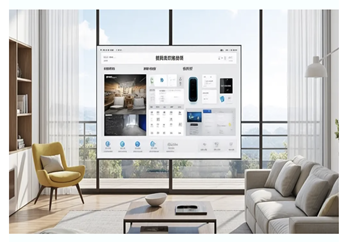As the world accelerates its transition toward sustainable energy and intelligent infrastructure, the HVAC (Heating, Ventilation, and Air Conditioning) industry is stepping into a transformative role. Once seen as a functional necessity, HVAC systems are now at the heart of global efforts to build more energy-efficient and comfortable environments. With artificial intelligence (AI) and green technologies at the forefront, HVAC is fast becoming a key player in driving the "dual carbon" goals and enhancing the quality of life across urban and industrial landscapes.

A Booming Market Backed by Innovation
The global HVAC market is on a strong growth trajectory. According to Technavio, the market is set to grow by $41.82 billion from 2020 to 2025, with a compound annual growth rate (CAGR) of 6.15%. IMARC Group forecasts the market will hit $300 billion by 2027, fueled by demand for energy-efficient and smart systems. In China, already the world's largest HVAC consumer market, the sector is expected to reach 600 billion yuan by 2025, with over 70% of products being energy-saving and smart air conditioners growing at a 20% annual rate.
This growth is being bolstered by rising global temperatures, government sustainability targets, and urban renewal initiatives. China's "Belt and Road" initiative and increased HVAC exports to emerging markets like Southeast Asia and the Middle East further emphasize the sector's international importance.
Smart and Green: The Next-Gen HVAC Solutions
AI has become a game-changer in HVAC technology. Companies like Midea are pioneering intelligent systems such as the AI Fengshui linkage, which integrates multiple components like air conditioners and wall-mounted boilers. These systems use adaptive algorithms to fine-tune temperature and water flow, allowing room-by-room customization with the tap of a button. The result? More comfort, less energy waste.
In parallel, energy-saving technologies are being integrated into product design. Westinghouse Electric's "Duke" series heat pump units, for instance, utilize PID spray cooling and frost shield technology to maintain high efficiency even in extreme cold, dramatically reducing defrosting needs and improving overall performance.
Benchmark Projects Setting Industry Standards
One standout example of green HVAC innovation is Midea Building Technology's Guangyang Island Energy Station Project. Designed to meet rigorous energy efficiency standards, this flagship development uses a combination of large centrifugal and screw machines to manage load fluctuations. Advanced systems such as Midea Kunyu's dual-mode centrifugal units provide four operational modes for flexible energy use, contributing to an annual energy saving of over 5 million kWh—equivalent to 2,055 tons of coal.
The project also features ground-source heat pump units and advanced four-pipe systems equipped with purification, ionization, and noise reduction technologies—underscoring a shift toward holistic, sustainable building environments.
Global Tech for Local Solutions
Beyond China, companies worldwide are contributing cutting-edge technologies. GeoAirCon in Pakistan reduces energy use in agriculture and industry through geothermal solutions, while Finland's Heliostorage uses seasonal thermal storage to harness excess heat in warmer months for later use. Meanwhile, HUGOPRO's smart ventilation systems ensure clean indoor air while saving 40% of installation space—perfect for ultra-low energy buildings.
Trends Shaping the Future of HVAC
The HVAC sector is rapidly evolving in several key directions:
- Intelligence: AI-driven personalization is becoming standard. For example, Midea's COLMO series learns from user behavior to optimize indoor climate control.
- Green Technology: Ground source heat pumps, ductless systems, and solar integrations are rising in adoption. Liquid cooling, especially for data centers, is poised to become mainstream.
- Globalization: Chinese HVAC manufacturers are setting up production bases overseas, strengthening supply chains in Mexico, Thailand, and beyond to meet regional demands efficiently.
Seizing the Opportunity
Urban renewal presents a major opportunity. By the end of 2022, China had initiated over 65,000 urban renewal projects with investments totaling 5.8 trillion yuan. By 2029, this figure is expected to surpass 9 trillion yuan, providing massive potential for smart HVAC system deployment in both new and retrofitted buildings.
HVAC Industry to Shine at 2025 WieTec
The upcoming WieTec from June 4–6, 2025, at the Shanghai National Exhibition and Convention Center, will showcase the full spectrum of HVAC innovation. With over 4,000 brands, 80 forums, and a focus on "Green Building·Smart Energy Saving," the event will provide a comprehensive platform for exploring the industry's future.
AI and green technologies are not just upgrading the HVAC industry, they're reinventing it. From smart algorithms and renewable energy integration to global expansion and sustainable urban infrastructure, HVAC is at the frontier of climate action and comfort innovation. As technology continues to advance, the industry is poised to lead the way toward a more livable, energy-efficient future for all.


